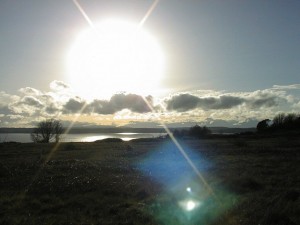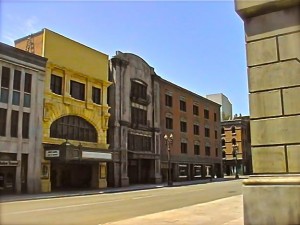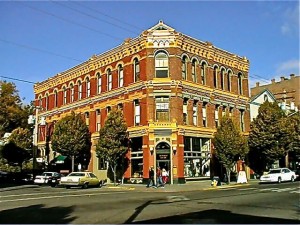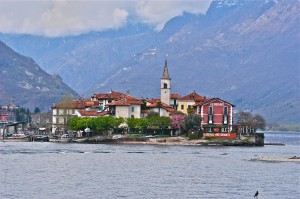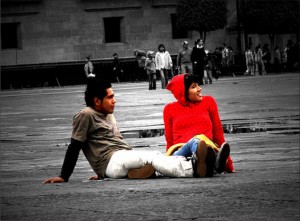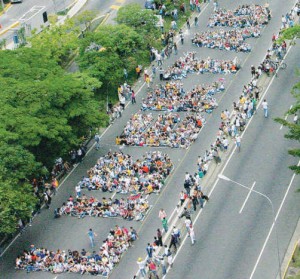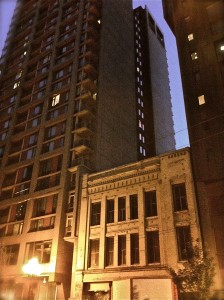This article is a collaboration of two people who have never met, one, an architect in Venezuela, Ana Maria Manzo (reachable via her blog, the place of dreams), and the other, an environmental and land use lawyer in the United States, Chuck Wolfe, founder of myurbanist.
Below, they provide intercontinental guidance for reading urban evolution.
The evolution of place is far from a linear process. Rather, it is an interactive story which features the blending of many dimensions.
Time, of course, creates new and old approaches to the look and feel of habitation, workplace, and the transportation routes between. The elements of water and land interface and interact, sometimes together, with the built environment. Climate drives seasons and forms of building, access and the manipulation of light. And cultural approaches to ownership and stewardship modify these responses to climate, and create alternative forms of building on the ground.
Today, we are driven by a new sustainability ethic, necessarily systemic in scope. Carbon-neutrality is the rage, and location efficiency, clean energy and the return of neighborhood are the watchwords of change. Formulas and metrics, and new regulatory systems attempt results, and show the quest to measure how close we are to achieving ideal forms of location and development.
But as both of us have written in different languages, context is key, and adaptation to a multi-environmental sense of place, associated imagery and sensation is an essential element of building design, urban development and innovation going forward. Creating beautiful buildings that are able to work for the environment, or crafting appropriate enabling regulations, should also be considered as part of a broader, holistic effort. There is no use in having architects, urban planners, developers and lawyers thinking in isolation about a better future.
This should be a movement of us all; a movement that evokes positive emotions in those who inhabit cities, and a movement which makes us dream.
What forces shape the look and feel of place? Above, the context of a water-oriented urban skyline in modern America (Seattle) compares with today’s view of biblical legend, adjacent to the “Valley of Death” (Silwan, East Jerusalem). Note the stark contrast created by available building space, history and the local ecology of water.
How to live amid the sunset? The interaction of urban space and the same sun shows historical variance in the United States and Montenegro.
How to accommodate population density? Through the advantages of a planned city as in the future Masdar in Abu Dhabi, or through the improvised Barrios of Caracas, Venezuela?
What are the bases of cultural inspiration and sense of place? A false town (Universal Studios) and a real town (Port Townsend, Washington) show how life can imitate art.
What is the relationship between natural resources and urban settlement at the shoreline? Here, in but one example, water, hills and towns blend together in form and function in Northern Italy and the Cyclades Islands of Greece.
How do people choose to “occupy” their familiar public spaces? Here, two young people enjoy public space in a plaza in Mexico, in contrast to a group of Venezuelan students, who, in political protest, spell with their bodies the word “freedom” in the midst of a major thoroughfare.
What is the contrasting look and feel of public street space based on cultural expression, local economies and changing transportation modes? Here, ironically, we see vitality amid economic duress in the Middle East, and economic challenges of removal of parking and loading for bike lanes in the new, multi-modal America.
What additional interfaces exist between commercial settings and public spaces around the world? Here, witness the role of music and dining against the backdrop of a grand, public square, and an eatery amid public streetside darkness.
How is space between new and old buildings used in different places? Here, we see access to a rear residence, compared with two modern towers flanking an older building which has fallen into non-use.
What becomes of mixed use development in areas with with different histories? Here, adjacent to Piazza Navona, we see the commercial path between emblematic public spaces in Rome, as compared to the current use of a street in Valletta, Malta, once reserved specifically for duels between storied knights.
In different contexts, how can bodies of water be used in urban areas? Here, American recreation contrasts with gondolas, now also arguably recreation in today’s Venice.
In conclusion, we reference more than history–we emphasize the need to access multidimensional memories of place to honor positive evolution in the design of new and redeveloped urban spaces. Hence, we must never forget the value of comparison, and of awareness and wisdom about the context of distant and romantic worlds which we often hope to mirror, or regain.
While every culture may provide different, contextual approaches, collectively these approaches should attempt a common goal: human life in a better urban landscape. All elements must be considered: sense of place, climate, sound, population density, geographic orientation and, of course, neighbor buildings.
When we are collectively able to consider all of these elements to envision the re-creation of urban settings, the evolution of place will take a new and positive direction.
(Initially co-published at the place of dreams and el lugar de los sueños. Republished in slightly different form in seattlepi.com and appeared in planetizen on August 23. Please scroll over photos for credits).


